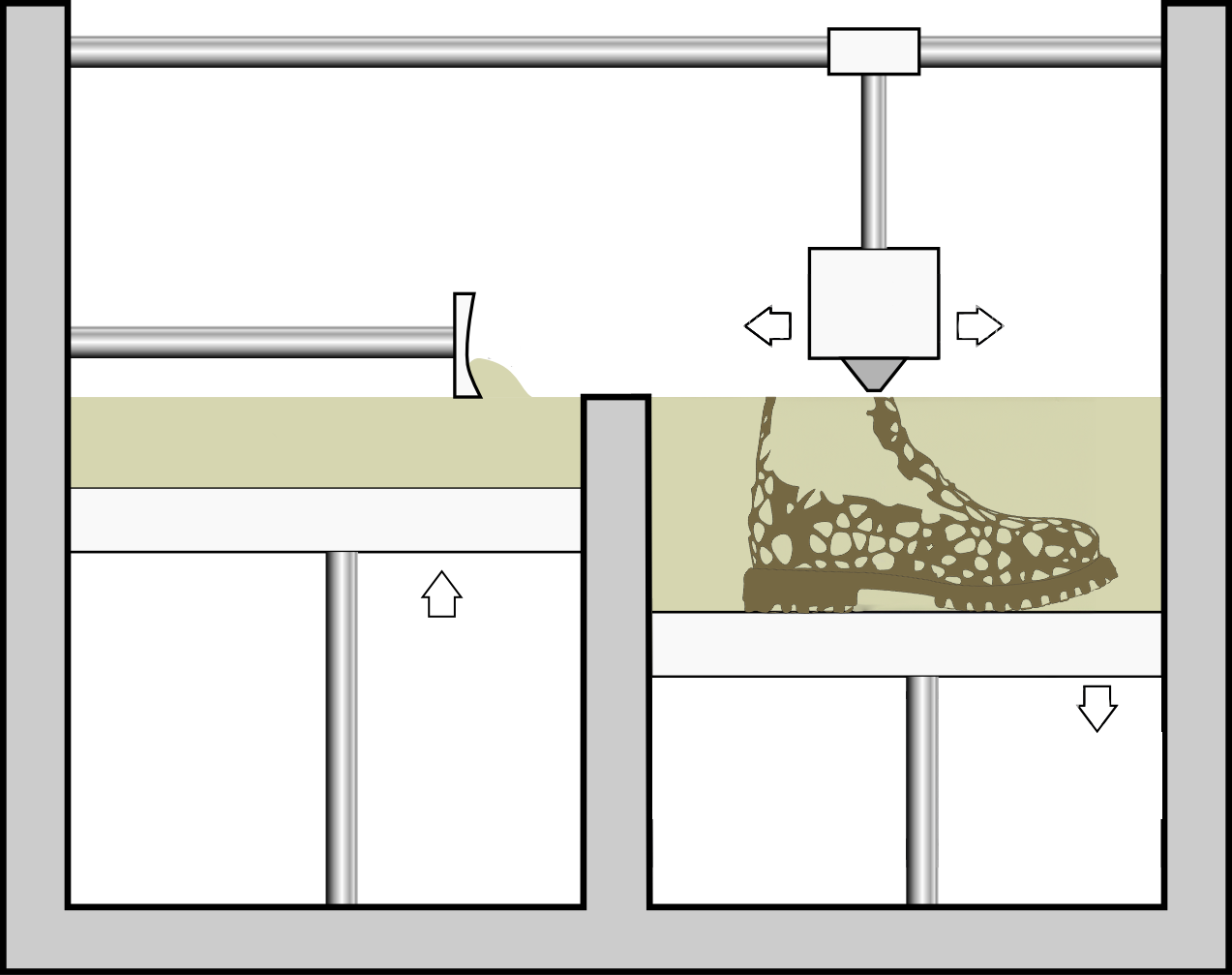eroded, industrializing the 6-inch boot concept
After developing the eroded concept together with Matteo and Stefano I wanted to turn it into reality. For this reason I made it the focus of my master degree thesis and I started working on finding the best way to make it happen.
The biggest challenge was to industrialize this boot while remaining sustainable, the footwear industry in fact is one of the most environmentally impacting: it’s responsible for 1,4% of the world’s carbon emissions, requires large quantities of water, energy, raw materials, chemicals and the majority of the shoes end up in landfills and the end of their life cycle.
For this reason I opted to manufacture the upper shell using HP Multi Jet Fusion, a powder-bed, 3D printing resource developed by HP.
The powder is evenly distributed and fixed by a binding agent and infrared light.
Compared to traditional SLS alternatives: 10x faster, more detailed prints and more materials options.
The material I chose is TPA, an innovative Nylon based thermoplastic developed specifically for HP printers, compared to traditional TPU has better shock absorption properties and allows a substantial weight reduction.
To make the shoe actually wearable I conducted a weight distribution study that helped me decide of to frame the densities in the outsole lattices:
front features a Voronoi lattice that offers more shock absorption, ideal for springiness in jumpstarts
back uses a Tetrahedral lattice, helps evenly distribute the weight and give support on casual rides
I then worked on the internal sock construction
The goal with the sock, to keep the boot true to its origins, was to make it waterproof, breathable and comfortable.
To achieve this I went for a layered construction. On the outside an engineered knit made with recycled polyester allows it to quickly dry when it gets wet, underneath a TimberDry bootie, a proprietary material developed with more than 50% of recycled plastic, this guarantees a complete seal from external water but allows breathability. A padded insole is found inside to provide more comfort to the foot.
The results with the first proto were incredible, compared to a traditional 6-inch boot in fact, eroded weights 40% less at just 360 g per shoe.
The shoe was tested for a day and it resulted walkable and usable thanks to the cushioning and its construction.
Despite that there are still possible improvements, I would have liked to increase the thickness and close the holes on the perimeter to make the overall structure more substantial.
initial concept developed with: Matteo Romanò and Stefano Vignini
renders in the full thesis: Matteo Romanò
pics: Marcello Maranzan
manufacturing support: HP and Shoesland






